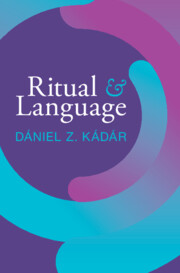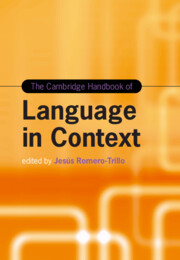273 results
1 - Language Acquisition
-
- Book:
- A Practical Guide to Second Language Teaching and Learning
- Published online:
- 03 May 2024
- Print publication:
- 30 May 2024, pp 1-21
-
- Chapter
- Export citation
La consolidación discursiva de la cisheteronormatividad a través de la marginalización del metrosexual, y las mujeres trans: El caso de la revista SoHo (1999–2014), Colombia
-
- Journal:
- Latin American Research Review ,
- Published online by Cambridge University Press:
- 24 May 2024, pp. 1-18
-
- Article
-
- You have access
- Open access
- HTML
- Export citation
7 - Framing the Freed Person
-
-
- Book:
- Freed Persons in the Roman World
- Published online:
- 16 May 2024
- Print publication:
- 23 May 2024, pp 189-216
-
- Chapter
- Export citation
4 - Interpreting History: Valuing Events in a Postcolonial World
-
-
- Book:
- The Discourse of History
- Published online:
- 16 May 2024
- Print publication:
- 23 May 2024, pp 73-94
-
- Chapter
- Export citation
Ordering Comics
-
- Journal:
- Canadian Journal of Philosophy , FirstView
- Published online by Cambridge University Press:
- 20 May 2024, pp. 1-18
-
- Article
-
- You have access
- Open access
- HTML
- Export citation
6 - Michel Foucault’s Influence on the History of Sexuality
-
-
- Book:
- The Cambridge World History of Sexualities
- Published online:
- 26 April 2024
- Print publication:
- 16 May 2024, pp 112-136
-
- Chapter
- Export citation
3 - Replacing the Custodians of Discourse
-
- Book:
- The New Experts
- Published online:
- 09 May 2024
- Print publication:
- 16 May 2024, pp 60-93
-
- Chapter
- Export citation
Introduction
-
-
- Book:
- The Cambridge Companion to British Theatre since 1945
- Published online:
- 14 March 2024
- Print publication:
- 21 March 2024, pp 1-20
-
- Chapter
- Export citation

Ritual and Language
-
- Published online:
- 07 March 2024
- Print publication:
- 28 March 2024
Time Matters in Cross-Strait Relations: Tsai Ing-wen and Taiwan's Future
-
- Journal:
- The China Quarterly , First View
- Published online by Cambridge University Press:
- 16 February 2024, pp. 1-16
-
- Article
-
- You have access
- Open access
- HTML
- Export citation
The limits of criminal justice reform: an analysis of elite rhetoric in four cities
-
- Journal:
- Journal of Public Policy , First View
- Published online by Cambridge University Press:
- 23 January 2024, pp. 1-25
-
- Article
-
- You have access
- Open access
- HTML
- Export citation
Navigating nuclear narratives in contemporary television: The BBC’s Vigil
-
- Journal:
- Review of International Studies , First View
- Published online by Cambridge University Press:
- 19 January 2024, pp. 1-17
-
- Article
-
- You have access
- Open access
- HTML
- Export citation
2 - Framing and Reframing Immigration
-
- Book:
- Immigration, Security, and the Liberal State
- Published online:
- 09 February 2024
- Print publication:
- 18 January 2024, pp 30-93
-
- Chapter
- Export citation

The Cambridge Handbook of Language in Context
-
- Published online:
- 30 November 2023
- Print publication:
- 14 December 2023
Chapter 2 - What Is Narrative?
-
- Book:
- Applied Narrative Psychology
- Published online:
- 02 November 2023
- Print publication:
- 16 November 2023, pp 16-21
-
- Chapter
- Export citation
Chapter 8 - Narrative Therapy
-
- Book:
- Applied Narrative Psychology
- Published online:
- 02 November 2023
- Print publication:
- 16 November 2023, pp 99-120
-
- Chapter
- Export citation
Beyond market neutrality? Central banks and the problem of climate change
-
- Journal:
- Finance and Society / Volume 9 / Issue 1 / 2023
- Published online by Cambridge University Press:
- 09 November 2023, pp. 14-34
-
- Article
-
- You have access
- Open access
- Export citation
Introduction
-
- Book:
- Prophets and Prophecy in the Late Antique Near East
- Published online:
- 26 October 2023
- Print publication:
- 09 November 2023, pp 1-26
-
- Chapter
- Export citation
7 - How Does Grammar Combine with Other Elements of Language?
-
- Book:
- Socio-syntax
- Published online:
- 19 October 2023
- Print publication:
- 02 November 2023, pp 171-206
-
- Chapter
- Export citation



